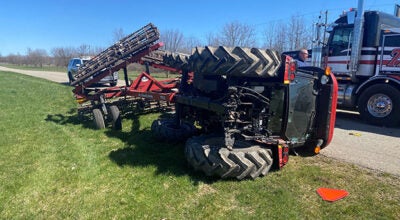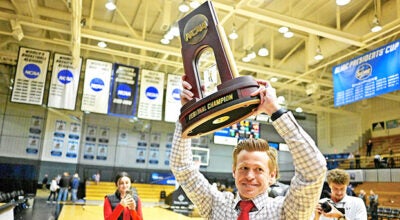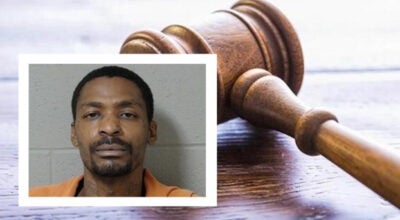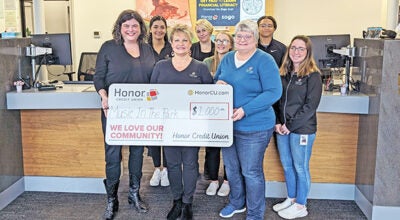Area historian recounts trials of Dowagiac-area Union soldiers
Published 9:30 am Monday, April 27, 2015

Area historian John Urschel discussed the history of the Union soldiers hailing from the Dowagiac area to diners inside the Elk’s Lodge Thursday evening. Urschel was the featured program of the Dowagiac Rotary Club’s annual “friends and family of Rotary” dinner. (Leader photo/TED YOAKUM)
From the infantry who marched behind General William Sherman during his ruthless march through the farmlands of Georgia to the cavalry who led the charge during Custer’s ill-fated raid during the Battle of Trevilian Station, soldiers hailing from the City of Dowagiac played a role in many of the American Civil War’s most pivotal moments.
Area historian and author John Urschel shared the stories of these and other Michigan soldiers serving in the Union army with the over 50 people assembled in the Elk’s Lodge Thursday evening. Urschel was the guest speaker during the Dowagiac Rotary Club’s annual “Family and Friends of Rotary” dinner that evening, giving spouses, children and other acquaintances of club members a chance to see the local service organization in action.
Urschel, a retired records manager, began chronicling the names of southwest Michigan men who participated in the civil war four years ago, while working as a contract archivist for the Buchanan District Library. Compiling information on the around 1,500 men from the Buchanan area who took part in the war over 150 years, the historian gave presentations and published a source book on his findings.
“That started a storm that took over my life,” Urschel said.
Urschel was then contacted by the Decatur library to perform a similar task for their institution, leading to him researching the names of Union soldiers from Cass County. He has since gone on to publish a total of nine books about Michigan men serving in the bloodiest conflict in American history.
Troops from the Dowagiac area were a part of several Michigan regiments that served throughout the four-year war, including the 6th, 12th, 13th and 19th Michigan infantry and 1st Michigan Calvary. Despite being more sparsely populated than many of 23 states that comprised the Union, Michigan contributed around 7,000 troops at the outset of the war, far exceeding the 3,000 man quota established by Washington.
Recruitment in the state remained strong in later years of the conflict, due in part to a bounty system that gave immediate payouts to men who enlisted, often of more than $150, Urschel said.
“[That’s] more than a farm boy from Michigan would see in his lifetime,” he said. “It was a king’s ransom. So you take the $150, give it to your mom, and you’re off to war.”
With hundreds of known troops from the area making up Michigan forces, Dowagiac’s total contributions to the Civil War may be higher than Urschel can uncover, due to the inaccuracies of reporting in those days, he said.
“[Recruits] played fast and loose with where they were from,” he said. “The guy writing down where you were from and all your information got paid a dollar a head, and he didn’t care if he got it right or not.”
Dowagiac companies saw action across nearly all fronts of the conflict, including in some of its most deadly engagements, such as Gettysburg, Shiloh and Stones River. Some also lost their lives in the infamous Andersonville Prison, a Confederate prisoner-of-war camp where nearly 13,000 northern soldiers died of disease.
Despite the somber subject matter, Urschel provided some levity to the evening during the question and answer segment following his presentation. When asked if he had ever participated in a civil war enactment, he told the audience he didn’t, gesturing toward the heavy Union officer’s jacket he had worn during the first part of his speech.
“To be an reenactor, you have to spend hundreds, maybe thousands of dollars to get yourself a uniform, which is wool. And you go out when its August, when it’s 110 degrees out, in a field, in a tent, in the rain, with a 1,000 other men,” he said. “Does this sound like fun to any of you?”






